Backpacking Venezuela Travel Guide (2025)
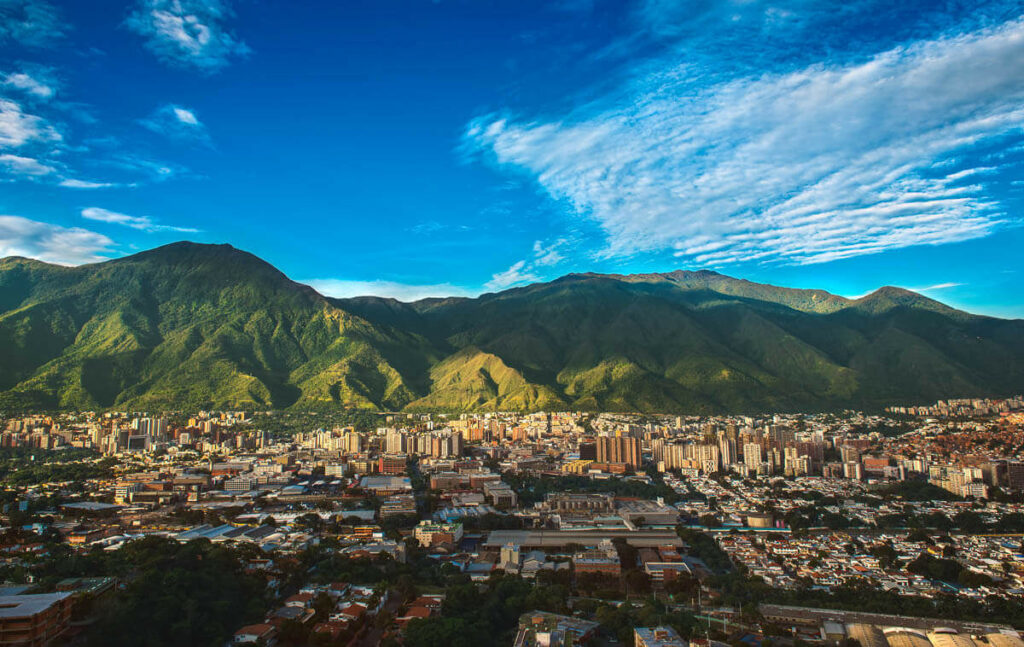
Wanna travel to Venezuela with Against the Compass?
Join us on a 2-week adventure across Canaima National Park, Los Llanos, Mérida and the Caribbean coast.
June 17th to 27th, 2025
Arguably, Venezuela might be the best country for travel in the whole of South America.
Blessed with the longest coastline in the Caribbean, the tallest waterfall in the world and the least unexplored part of the Amazon, Venezuela is packed with wilderness highlights.
While you might be thinking that every country in the continent is filled with jaw-dropping attractions, what I truly enjoyed about traveling in Venezuela is that there is no other Spanish-speaking country in the continent which is also so raw and authentic.
Yet Venezuela doesn’t come without its own travel difficulties and obstacles, so in this guide, you will learn how to travel in Venezuela, including tips on safety, money, accommodation, getting around and much more.
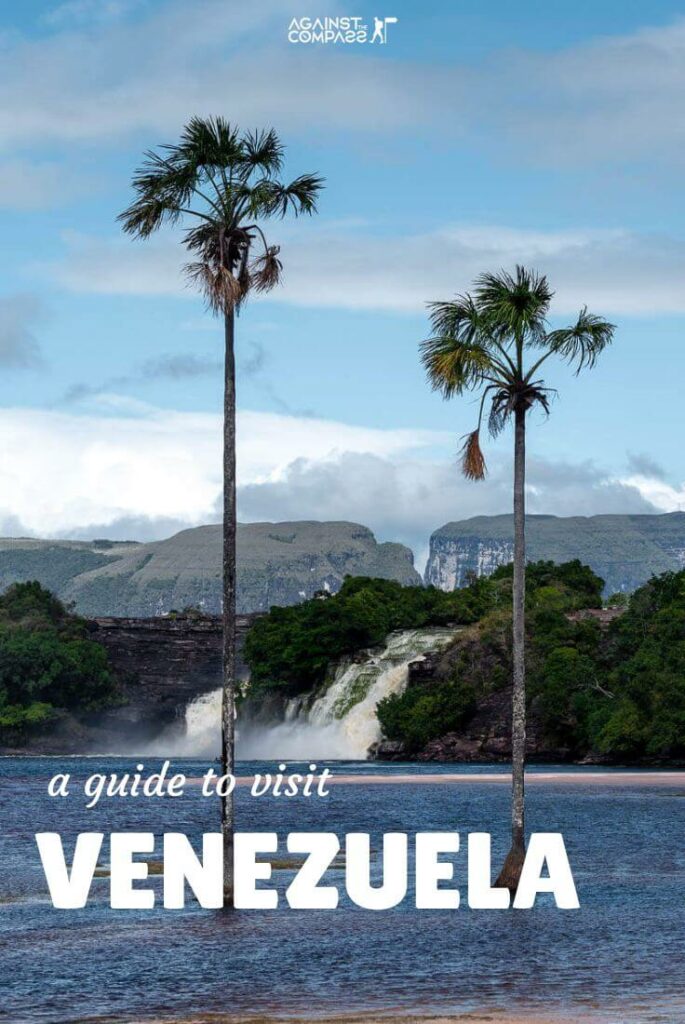
In this Venezuela travel guide, you will find:
Table of Contents
our recommended travel insurance for Venezuela
With its Backpacker plan, IATI Insurance is the best insurance for any kind of adventurous destination, like Venezuela.
📰 Venezuela today
Can you travel to Venezuela?
Similar to Iraq or Somalia, Venezuela has an incredibly bad reputation for being one of the most dangerous countries in the world.
Venezuela, nevertheless, has never experienced suicide bombings or war-related problems. What it did have was a problem with high rates of violent crime, inflamed by one of the worst and longest-lasting economic crises in the world.
Venezuela’s economy is fully dependent on oil and is managed by extremely corrupt leaders with absolutely zero incentives, all fueled by the impementation of extreme Communist laws and policies that saw the country experience 10,000% inflation and a shortage crisis that lasted nearly 10 years, until 2019, a crisis that brought hundreds of Venezuelans close to starvation because they couldn’t even find a bag of rice in the supermarket.
Venezuelans have suffered what is not written, and listening to their stories should be an unmissable part of your trip, as much as visiting the Angel Falls.
Today, the situation isn’t great but with the stabilization of their currency and the significant improvement in security, local people are feeling more optimistic and enthusiastic about their futures.
In my opinion, there hasn’t been a better time to travel to Venezuela than now.

⚠️ Is it safe to travel to Venezuela?
Is Venezuela safe for tourists?
Several years ago, Venezuela was one of the most dangerous countries in the world – in my opinion far more dangerous than countries like Afghanistan, Yemen or even Mali.
Express kidnappings, muggings and road assaults were part of everyday life for Venezuelans.
On Monday mornings, the main topic of conversation between colleagues at pretty much any office or university was about who got robbed or kidnapped over the weekend.
Venezuela was so dangerous that even the Venezuelans’ habits shifted in cities, with streets clearing after 6 pm, since people preferred to celebrate and gather with friends in their own homes.
This terrible situation went on until around 2020.
Right now, traveling in Venezuela is safe, for the following reasons:
Read: Why you should travel the World without censorship

1. The Government took action against local mafias
Basically, by carrying out raids in specific shanty towns, targeting the organizations involved in kidnappings.
The police were very effective, but only because they went in and shot everyone indiscriminately, killing loads of innocent people at the same time.
2. Because of the crisis, kidnappings were no longer profitable business
Express kidnappings consisted of taking someone by force to make them empty their bank accounts, while threatening their and their family’s lives.
The problem however, is that Venezuela was suffering the worst of all inflations, so wealthy Venezuelans moved their fortunes to bank accounts in either Madrid or Miami, hence there was no way for them to transfers their funds, meaning the kidnapping business wasn’t very profitable any more.
Similarly, because of the crisis, ordinary Venezuelans weren’t carrying any money on them, mainly because the Venezuelan Bolívar was absolutely worthless, so mugging became increasingly difficult as well.
3. The thieves fled Venezuela to neighboring countries
Given the situation, many thieves decided to leave Venezuela, heading mainly to other Latin American countries such as Colombia, Ecuador or Perú.
Conclusion: Is Venezuela safe to visit?
Venezuela is safer to travel than it used to be, as all Venezuelans will tell you. But remember that still, this is rough and raw Latin America, so use your common sense: don’t display your valuables, don’t walk about alone after dark, etc.
Is Venezuela safe for Americans?
Yes, of course. Local people won’t judge you based on your nationality.
Also, it’s not like the USA has ever invaded and started a war in Venezuela, like they did in many Middle Eastern countries, so Americans can travel around Venezuela without fear.
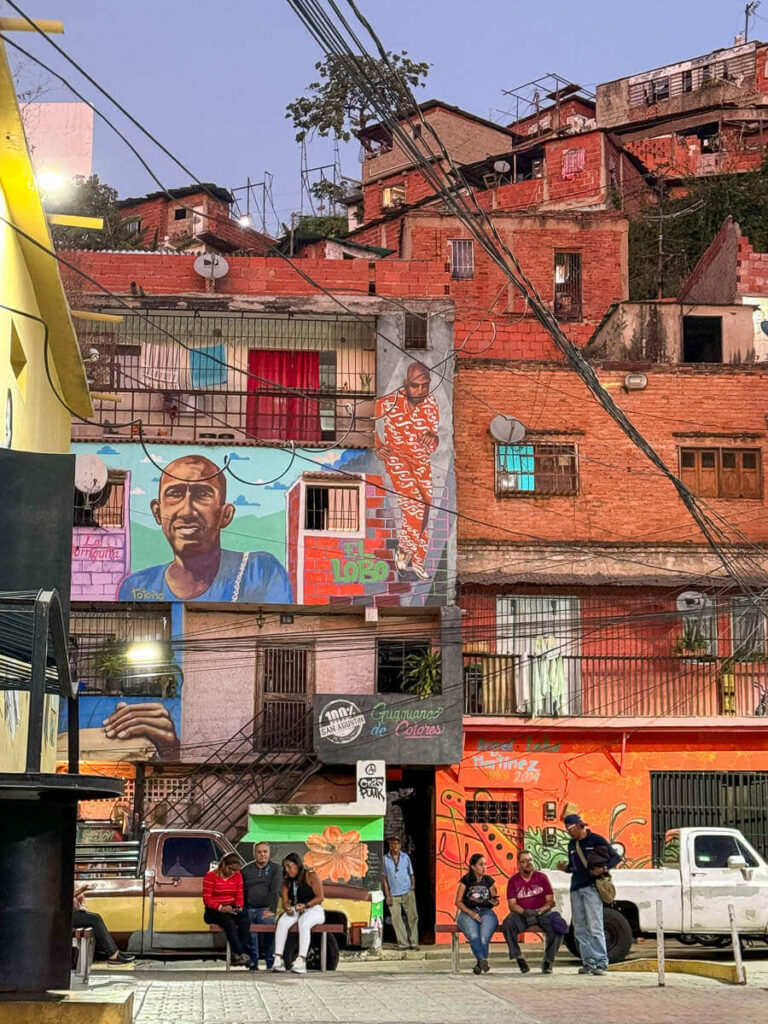
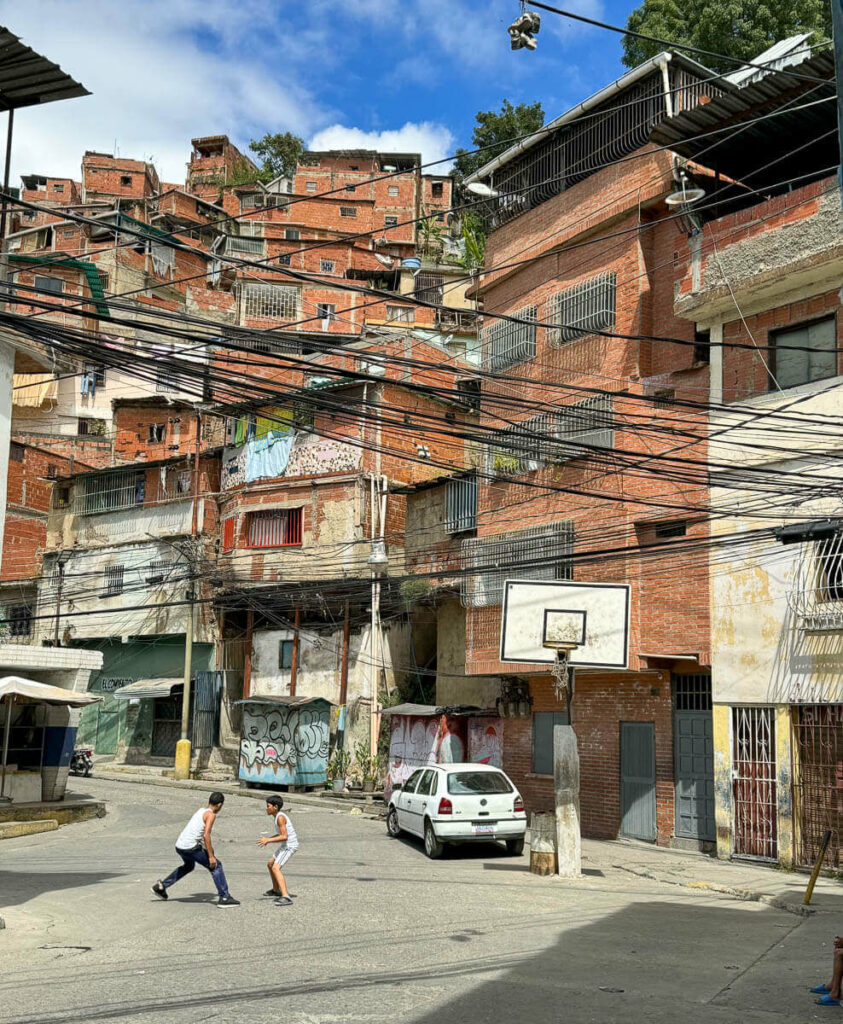
🪪 How to get a visa for Venezuela
Most nationalities can get a free visa upon arrival, allowing you to travel in Venezuela for 90 days. This rule applies at both international airports and land borders.
Can Americans travel to Venezuela with a tourist visa?
Americans – and also Canadians – are the exception to the rule.
They can’t get a VOA, so instead must apply at the Venezuelan embassy in either Mexico City or Panama City.
The process can take up to 5 months (no kidding!) and the rules change all the time.
Fortunately, there is a pretty active Facebook group where travelers share their experiences in securing a tourist visa for Venezuela.
The group is called Venezuela Visa Support.
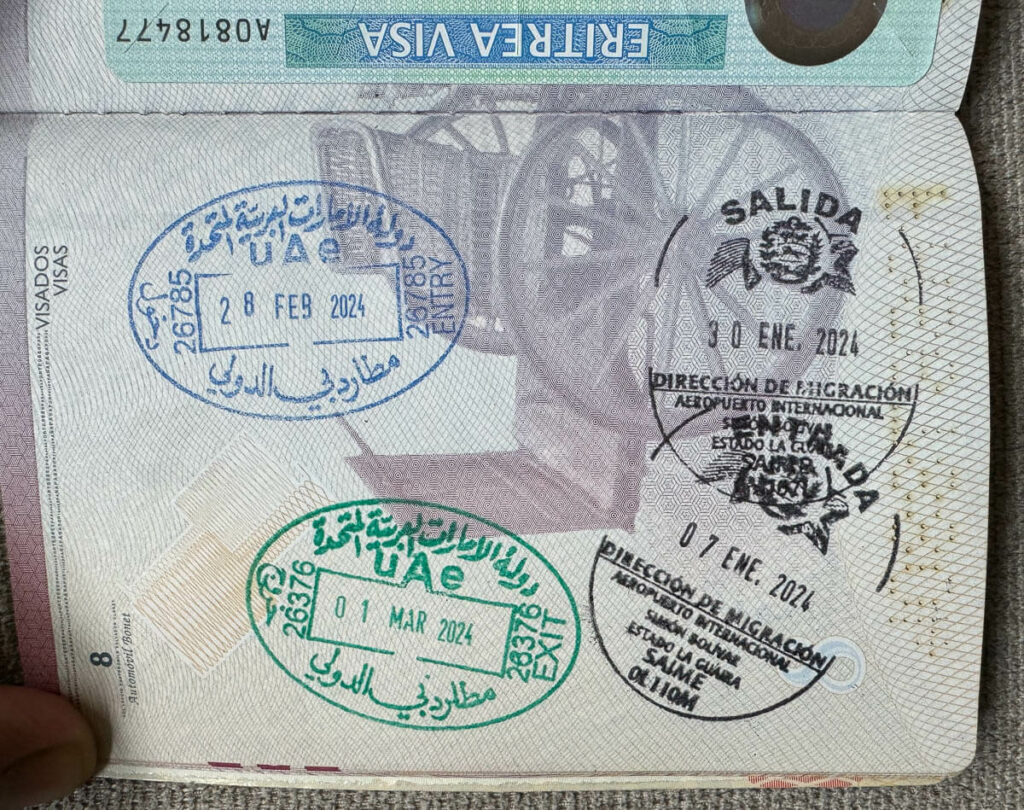
🚑 Travel insurance
Venezuela is an adventurous destination, so we recommend going there with proper travel insurance.
I recommend IATI Insurance because:
- Their backpacker plan covers all types of adventure activities, including trekking
- Very competitive prices
- Readers of this blog can get a 5% exclusive discount
💰 Money & budget for backpacking in Venezuela
Money is a complicated matter when backpacking in Venezuela, there are so many particularities.
Here’s what you need to know.
The local currency is now in parity with the US dollar
In Venezuela, they use the Venezuelan Bolívar and approximately:
1 USD = 36 VES
I’m not an economist so I don’t know how this actually works, but after inflation of nearly 10,000% back in 2019, the Government of Venezuela managed to contain it by equalizing the Bolívar with the US dollar.
The Venezuelan economy is now completely dollarized
While the Bolívar is still in circulation, the US dollar is quickly becoming the main currency, and it can be used for any type of transactions.
At small local businesses, such as fruits & veg shops, or convenience stores, they’ll likely give you the price in Bolívares although you will always be allowed to pay in USD.
If something costs less than 1 USD, they will give your change in Bolívares.
Bring all your money in cash
You can’t really withdraw money from an ATM.
I mean, technically you can, but ATMs always give Bolívares and only up to a certain amount, which tends to be the equivalent of no more than 25 USD.
Therefore, do bring all your money in cash, and in US dollars.
Bring the smallest possible notes
This is the number one tip for traveling in Venezuela.
In Venezuela, nobody has change, but I am not talking about not having change of $100. I am talking about buying something worth $4 dollars, paying with a $5 note and not getting your dollar change because the guy from the shop doesn’t have any.
This didn’t happen just once, or twice, it was a constant nightmare that happened several times a day, every time I tried to buy something outside of Caracas.
There’s a shortage of cash in Venezuela. In Caracas you can pay by card virtually everywhere so this shouldn’t be much of a problem there, but outside of the capital it really is.
How are the locals dealing with it? Well, they don’t really use cash; instead they use Pago Móvil, a mobile app for instant payments that can only be used if you have a Venezuelan bank account.
I know it’s hard to bring $1 bills, but just try to bring the smallest possible notes.
You can’t get money out of ATMs but you might be able to pay by card
However, don’t rely on this.
For example, my Revolut Card didn’t work in Venezuela but my N26 did, even though both of them are Mastercard.
In Caracas, cards are accepted everywhere, but that might not be the case in other parts of the country. It’s just random, sometimes they do accept cards, sometimes they don’t.
How much does a trip to Venezuela cost?
Estimating the cost of traveling to Venezuela is difficult, since it really depends on where you go, and what activities you do.
On the one hand, there’s Caracas.
Caracas is super expensive. If you decide to stay in Chacao, which is the safest area in the entire city – pretty much the only place where you can walk around without any fear – then know that things will be ridiculously expensive, e.g. $100 for a basic hotel room, $15 for an average local meal and $60 for a meal in an international restaurant (nothing fancy).
Then there are the touristy places such as Los Roques, Canaima, Los Llanos, the Orinoco Delta and Roraima. These places are also super expensive, so you should budget around $150 a day depending on where you stay.
Check out our Canaima travel guide to find out how to reduce costs.
Mérida and Margarita are the only famous tourist havens that are pretty affordable, where you can find excellent accommodation for $30, and the food is cheap too.
Everywhere else is cheap. In Valencia for example, you can find decent accommodation for $20, and a good local meal for $4. Public transportation is also cheap, I don’t think I ever paid more than $10 for a long-distance bus.

⛅ Best time to visit Venezuela
Venezuela is a year-round destination, so the best time to visit will depend on what you want to do.
Traveling in Venezuela from July to October: the rainy season.
During the rainy season, all of the waterfalls in Canaima National Park will be at their fastest flowing, including Angel Falls, the tallest waterfall in the world and the country’s top tourist attraction.
It’s important to highlight that the rainy season in Venezuela isn’t one of those Asian monsoon seasons with hurricanes where it keeps pouring all day long. It’s more like heavy rain for a few hours a day.
This season, however, might not be ideal for visiting the coast and the islands of Margarita and Los Roques.
It will also be pretty cold in the mountains around Mérida and, while Los Llanos will be covered in lush green, it’s not the best season to spot anacondas and other animals.
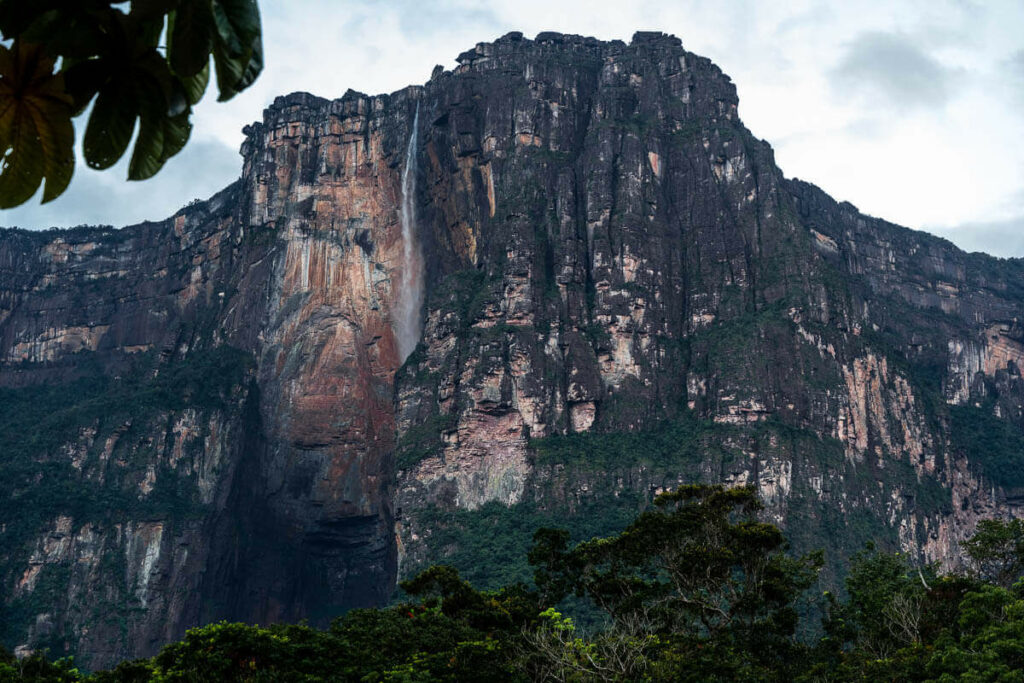
Traveling in Venezuela from November to April: the dry season
The dry season comes with its pros and cons as well.
For Canaima, be aware that the later you go, the less water you’ll find, so I don’t personally recommend going there in March or April.
On the other hand, the dry season is an excellent time to visit the islands, as well as for doing a safari in Los Llanos, including spotting giant anteaters and 5-meter anacondas.
Check our travel guide to Los Llanos for more information.
Venezuela travel tip: avoid local Bank Holidays
In Venezuela, there are very few foreign travelers but domestic tourism is pretty big, especially during certain annual festivities. You may want to avoid traveling to Los Llanos, Canaima, Margarita or Los Roques during the following dates:
Carnavales (February or March, depending on the year)
Easter (March or April, depending on the year)
Christmas Holidays
July 5th and 24th
🛖 Top Experiences in Venezuela
Go on an anaconda safari
Along with the Amazon, Los Llanos boatds with one of the largest populations of giant anacondas, and safaris to spot them can be easily arranged.
Check our travel guide to Los Llanos.
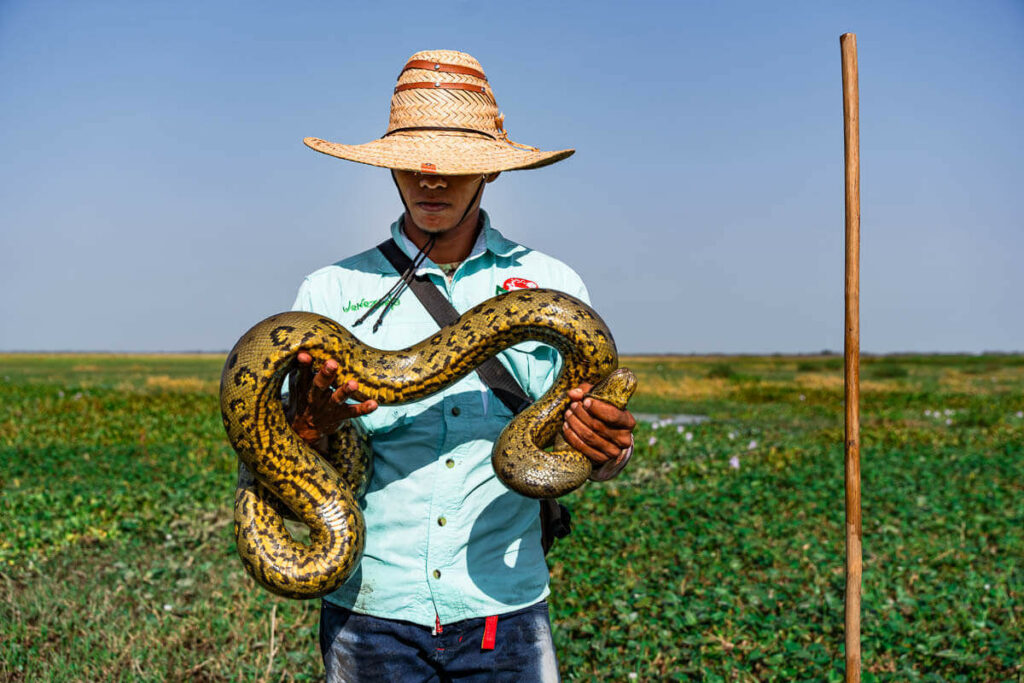
Explore Caribbean towns
The coast of Venezuela has a very distinct, very Caribbean culture, with the added advantage that it hasn’t been spoiled by foreign tourism – Choroní or Chacao being great examples.
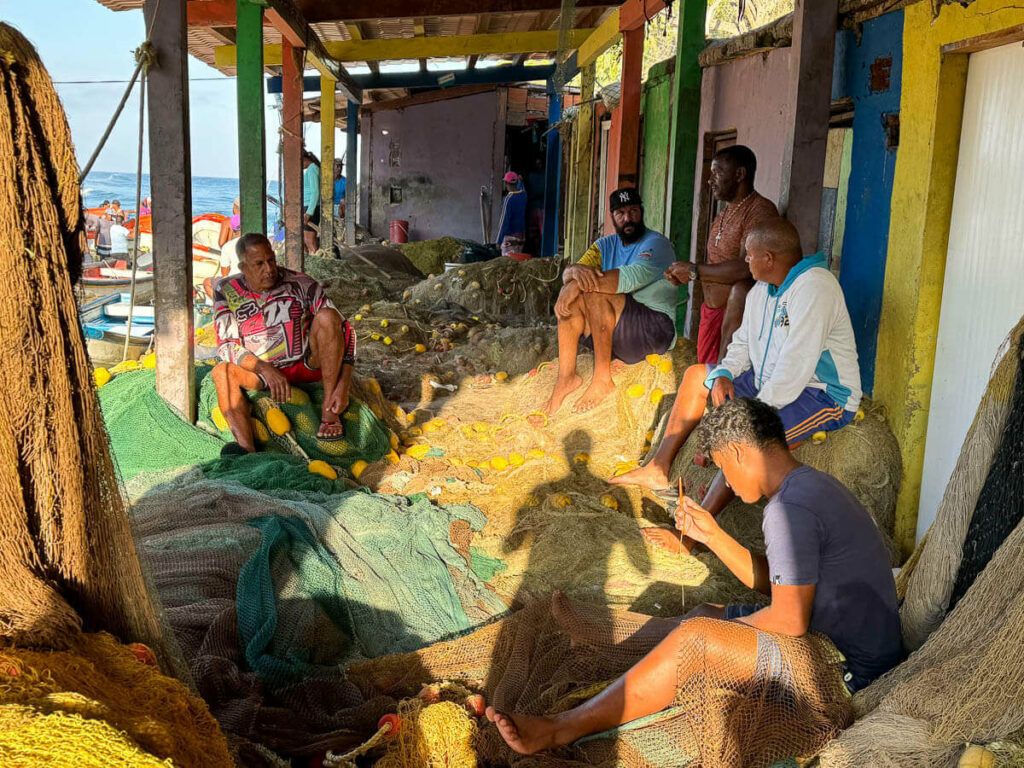
Visit the tallest waterfall in the world
Venezuela is home to the world’s highest uninterrupted waterfall (979 meters). This waterfall can be found in a stunning national park named Canaima, which is only accessible by flying in.
Check our travel guide to Canaima.
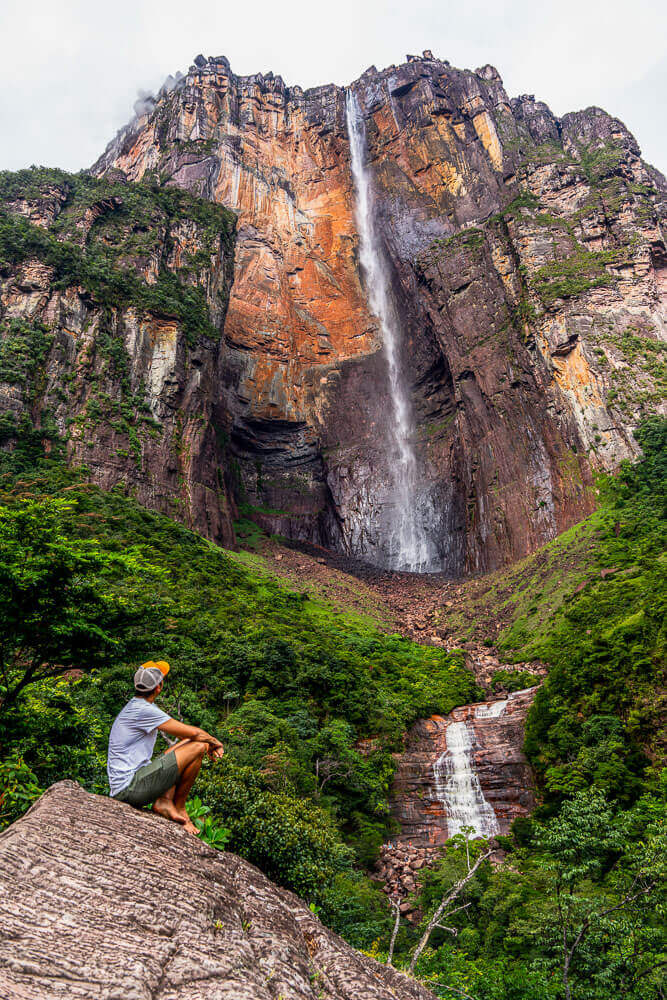
Venezuelan people
Venezuela has seen very few backpackers for the last 30 years, so expect to make friends everywhere – more than in any other Latin American country!
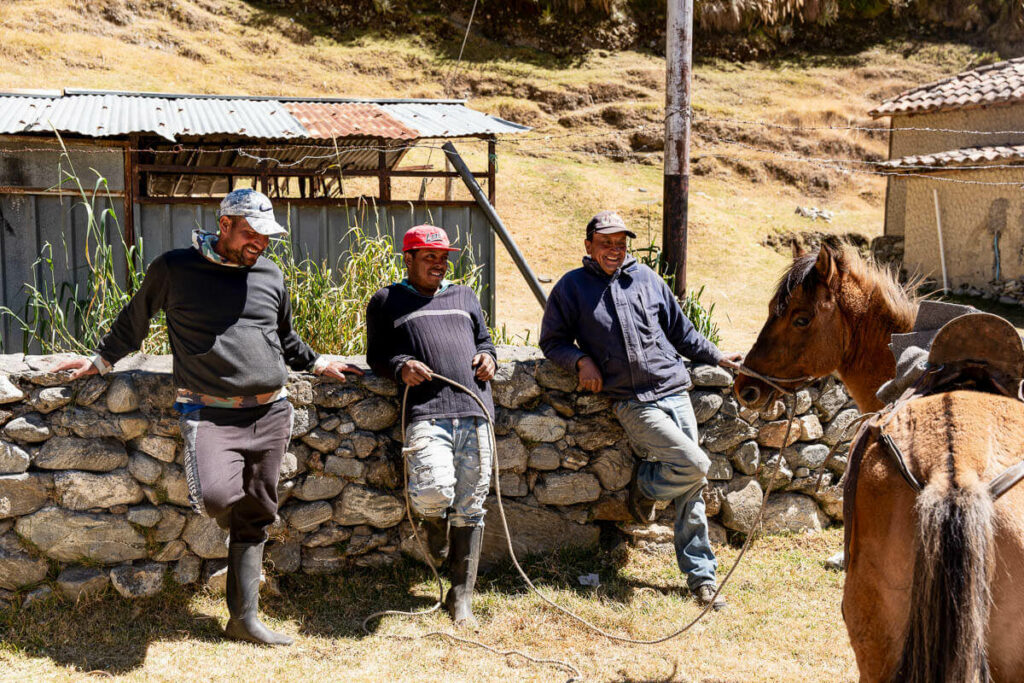
Backpacking in Mérida
Mérida is the best example of traditional Venezuela, old colonial villages built in the Andes that feel like stepping back in time.

🛫 Getting in: how to travel to Venezuela
How to fly to Venezuela
Maiquetía or Simón Bolívar International Airport is the main airport hub in Caracas.
To be honest, it’s a fairly small airport with few connections.
If coming from Europe, Madrid is by far the best hub. Check Iberia or Air Europa.
You can also fly from Lisbon (TAP Portugal) and Istanbul (Turkish Airlines).
There are direct flights from Moscow as well.
Alternatively, you can also fly from Colombia, Panamá or México.
How to travel to Venezuela over land borders
Venezuela shares a border with:
- Colombia: all borders are open and easy to cross
- Brazil: despite sharing a very long border, there’s only one proper border crossing at Paracaima, the rest being dense jungle.
- Guyana: there aren’t any roads connecting both countries, only jungle, hence there isn’t any official border crossing.
👨 Independent travel in Venezuela
I traveled around Venezuela for 25 days using public transportation.
Do you know how many backpackers I saw?
Zero, not a single one.
I did see foreign tourists in Canaima National Park, as well as a tour group in Los Llanos but not a single backpacker traveling independently around the country, not even in Mérida.
Venezuela is still perceived as a dangerous destination, few and far between are the travelers venturing here on their own, the reason being that it’s difficult to find any travel information about for it, e.g., there are barely any updated travel blogs on Venezuela.
You will also like: South Ossetia Travel Guide

🛺 Transportation: How to move around Venezuela
How to travel around Venezuela by public transportation
Transportation in Venezuela isn’t very different from other Latin American countries.
Each town will have its own bus terminal, from where you can catch a bus to other villages, towns and cities.
Wealthy Venezuelans will always tell you that traveling by bus is very dangerous and that you shouldn’t even think about doing it, but I found bus travel to be one of the most enriching experiences in Venezuela, especially on long distance journeys, where bus passengers tend to become friends.
It’s a great opportunity to get local insights from the segment of Venezuelans who have struggled the most, the people who can only afford to travel by bus.
In big cities like Valencia or Caracas, some routes offer different types of buses, from comfortable AC coach buses to crumbling mini vans without windows.
Venezuela travel tip: If traveling with an AC bus, do always bring one extra layer cause they tend to put the AC at 8ºC
There are no general rules for taking buses, it just depends on the specific route, and which terminal it departs from. Sometimes there is a proper bus schedule, sometimes they depart only when full. You might also be lucky to ride on a neat air-conditioned coach, or you might get a crumbling mini van without windows.
Where are the bus stations in Caracas?
Caracas is obviously the main hub for bus travel around Venezuela, and these are the main 3 stations:
Terminal La Bandera: buses that travel West of Caracas, including Valencia, Maracaibo, Los Llanos, Mérida or Amazonas State.
Terminal Antonio José de Sucre: buses traveling east of Caracas – Oriente, like Venezuelans say – including Barcelona, Bolívar State or Santa Elena.
Terminal Privado Aeroexpresos Ejecutivos: fancy buses for the most common destinations in Venezuela, including Mérida or Santa Elena. Buses here are more expensive, run less often and need to be booked in advance but they sell the idea of extra comfort and security. As a backpacker, I prefer traveling from either of the other 2 stations.
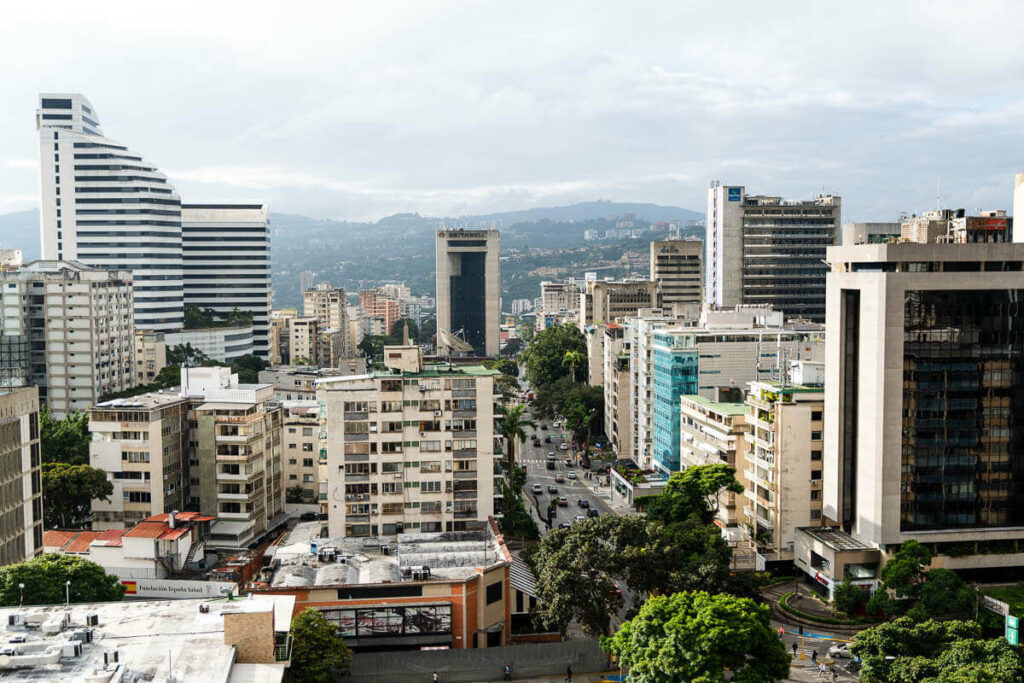
In small towns with small terminals, where buses don’t run that often, it’s easy to find shared taxis as well.
You have to ask for a carrito a plaza.
Traveling around Venezuela by plane
Venezuela is a big country, so travelers with little time to travel in Venezuela might opt to take a domestic flight.
The problem, however, is that flights can’t be booked online; you must purchase your flight tickets at the respective office in the airport. That or look for a local travel agency to do it for you, for an extra fee.
Additionally, other than Los Roques and Margarita, flights between destinations don’t run every day, so you really need to plan your itinerary in advance.
Common domestic airlines are Avior Airlines, Conviasa and Laser Airlines.
Traveling around Venezuela with a Vehicle for Hire app
Yummy Rides and Ridery are the local versions of Uber, available in most cities across Venezuela, but they can also be used for long distance transportation.
🏨 Accommodation: where to stay in Venezuela
Booking sites such as booking.com are not very useful in Venezuela, since they only offer a few expensive options in Caracas.
The best way to look for accommodation in Venezuela is on Google Maps.
Look for a hotel, call them and ask for price and availability.
Local guest houses are locally known as posadas. They are usually cheap, averaging 20 USD a night without breakfast.
Posadas can be found virtually everywhere in Venezuela.
In touristy places such as Los Llanos, Delta del Orinoco, Canaima or Los Roques, you won’t find local posadas, and instead you will generally stay in lodges – which tend to always offer full board, especially since they are located in remote areas with no restaurants around.
👫 Venezuelan people
I found people in Venezuela to be extremely friendly.
The experience is similar to Colombia, let’s say, but many Venezuelans have barely interacted with a foreigner before, creating an extra incentive for them to meet foreign tourists.
I was the first Spanish person to ever talk to many Venezuelans across the country, especially people in their 20s or 30s. They had only heard Castilian Spanish accents in movies, in La Casa de Papel (Money Heist), or on YouTube, so that was the perfect ice-breaker for any conversations.
One day, I was walking along the promenade of Choroní when I approached a group of Venezuelans having a good time, with a portable fridge packed with beers.
“Are you selling beer?” I asked.
“No, but here’s one for you“, – he answered.
It was 8 pm and I ended up partying with them until 4 am.
Venezuelans love partying, drinking, loud music, dancing, having fun… and they will never hesitate to ask a stranger to join them.
Other than friendliness, Venezuelans are generally very conservative. Well, I wouldn’t say conservative but it is still a very traditional society. They’re very family-oriented and things like homosexuality, for example, are still taboo.
Don’t get me wrong; their opinion on homosexuality is different from the Middle East. You won’t go to jail and nobody is going to bother you, but a large number of people will think that it isn’t normal.
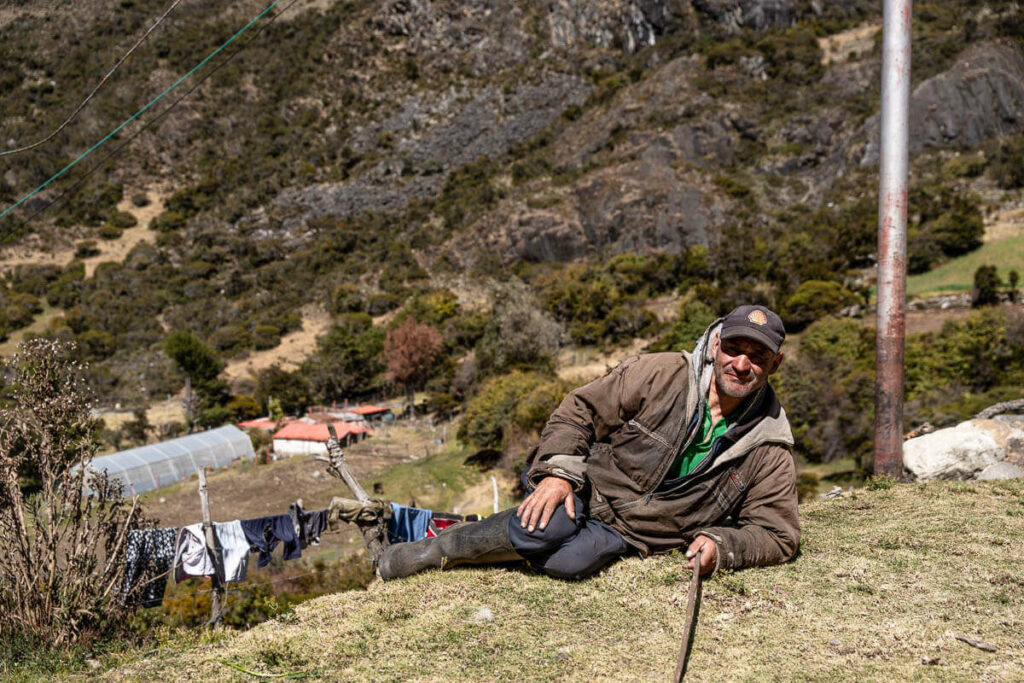
How many people have fled Venezuela?
Depending on which part of the world you’re living in, you may have noticed a massive influx of Venezuelans currently living abroad, who have fled their countries due to the economic crisis.
It’s quite noticeable in Spain, as well as in the USA, and other countries in Latin America.
People in their 20s, 30s and 40s are the one who left, and they have no intention to come back. This massive exodus of people is also noticeable in Caracas, where there isn’t much going on.
💬 Language
Spanish is the official language of Venezuela, and I strongly recommend learning at least some basics because very few Venezuelans can speak English, not even in Caracas, or within the tourism industry.
Even in Hato El Cedral in Los Llanos – where I met a group of people from Central Europe – they didn’t have any English-speaking guides, and they were only able to communicate with them because one guy in the group spoke fluent Spanish.
Other than Spanish, up to 40 different languages are spoken in Venezuela by the indigenous communities, according to the local census.
🍲 Cuisine: what are you going to eat during your trip to Venezuela?
The local food isn’t the reason you will be traveling to Venezuela, but it’s alright, cheap and the portions are huge.
Breakfast in Venezuela
Most Venezuelans will have breakfast at the bakery, where they eat different kinds of pastries, the most popular being cachito de jamón y queso, a yeasted bread filled with ham and cheese.
Surprisingly, many hotels and posadas don’t include breakfast, but a heavier breakfast would typically consist of cheese, eggs and arepa (corn bread)
National dish
Pabellón Criollo is the national dish in Venezuela, consisting of black beans, rice, meat and plantain, available in most local restaurants.

Other snacks
My favorite was cachapa, a slightly sweet Venezuelan pancake filled with cheese, but you can find it with many other fillings too.
Another popular snack is the stuffed arepa, available with all sorts of fillings as well, but usually cheese and meat.
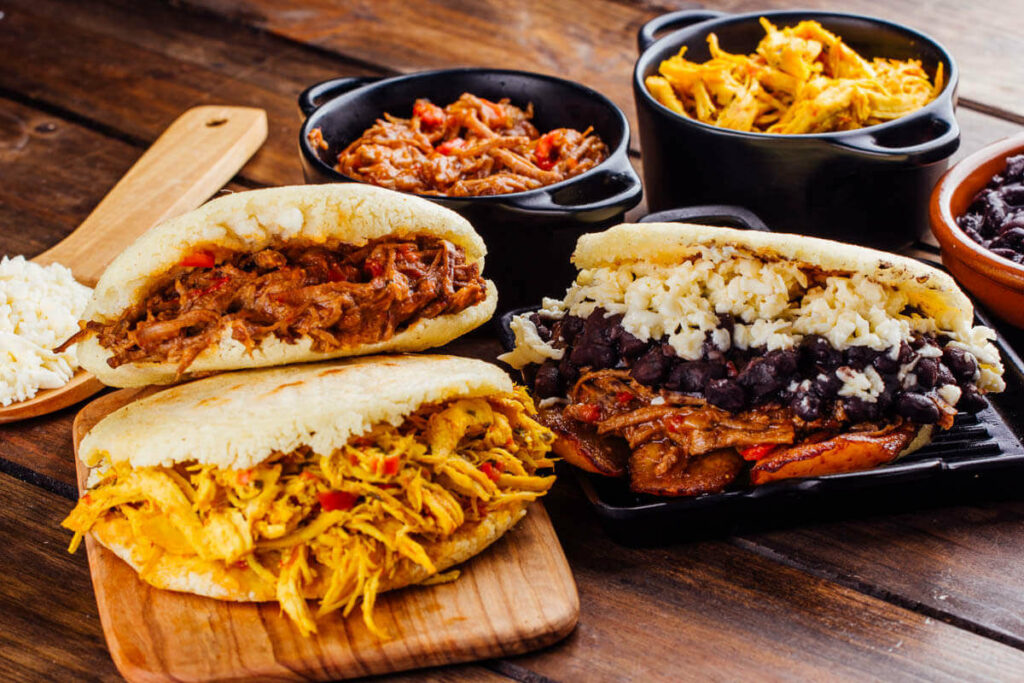
Beer in Venezuela
The cheapest thing you can buy in Venezuela is beer, which rarely costs more than 1 USD for a 20cl bottle.
Venezuelans like to drink it ice-cold, so anywhere you go, cold beer is guaranteed.
They have quite a few brands but Polar is the one that can be found everywhere. In fact, outside of Caracas and tourist sites, it’s difficult to find any others.
Internet in Venezuela
Venezuela has probably the slowest internet in all Latin America, here’s what you need to know.
💻 Wi-Fi
Most hotels and posadas have Wi-Fi, with an OK connection.
In Canaima, many lodges have a StarLink receiver, which is good enough for simple browsing.
Internet data
You can easily buy a SIM card packed with internet data.
However, bear in mind that many areas of Venezuela, including Canaima or certain parts of Los Llanos and Mérida have very little coverage, and even in Caracas it’s a little bit slow sometimes.
I bought a Digitel SIM at their official store in the Chacao area.
Can you get an eSIM for Venezuela?
Yes, now you can get an eSIM with Airalo, which offers different packages for Venezuela.
However, I recommend getting a local SIM card, since eSIMs only offer internet service, but you might want to be able to call a local number, as explained in the accommodation section of this post.
❗More travel information for Venezuela
📢 In my Travel Resources Page you can find the list of all the sites and services I use to book hotels, tours, travel insurance and more.
All guides and articles for traveling in Venezuela destination
More travel guides from the Americas
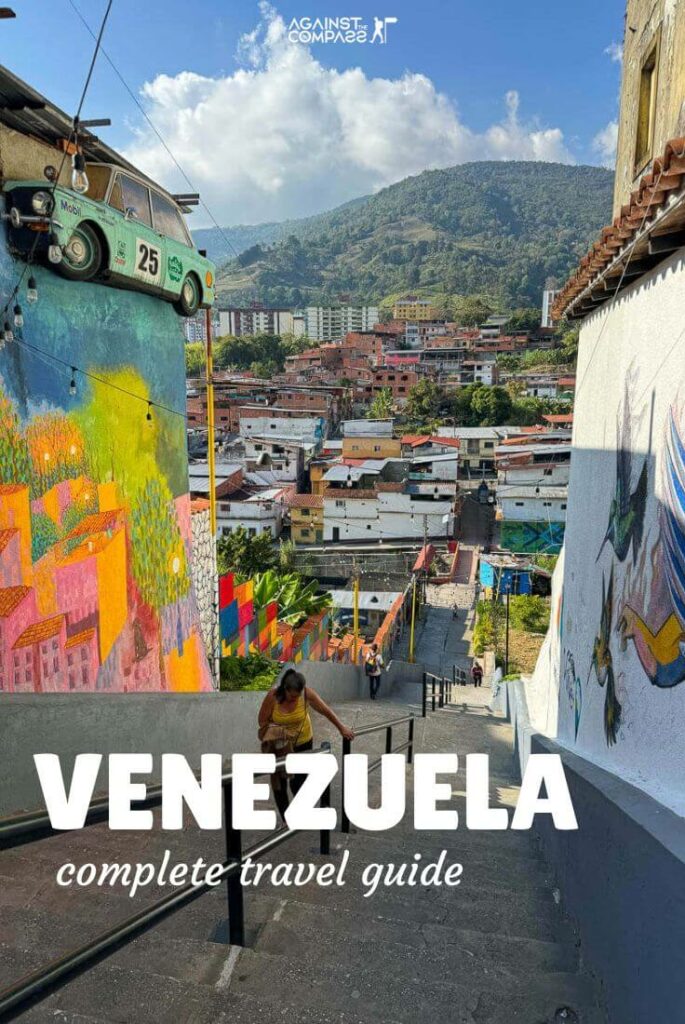
24 comments
This is really useful – thanks for all the information. Could be a good time to plan my dream Mount Roraima ascent!
Haven’t been in that part of Venezuela, but it’s really in my plans!
Thank you for this priceless guide to Venezuela. It’s impossible to find any updated information -or any at all-.
My only concern is about bringing all the money in cash (US dollars). I’m relieved that it’s much safer now and thieves have fled the country; however it’s a bit stressful carrying say $1,500 with you at all times.
Hi Diego, yes, I can understand all the inconvenience. I was actually carrying way more than that, since i was there for 25 days, not to mention laptop and camera gear!
Hi Joan,
how would you rate the safety outside the big cities?
Much safer than in cities of course, but one must be careful anyways.
I’ve visited 8 of the 12 countries in SA and enjoyed them all – very much! I hope to visit Venezuela soon (and also Guyana, Surinam and French Guiana) – before I become old and decrepit. Thank you, Joan, for a write up that’s both educational and inspiring!
Thanks a lot, Ben 🙂
It is indeed a very interesting and useful page, much appreciation for the time, the informed insights, and the variety of valuable tips backed by direct experience!
I have a specific question related to the section “Getting in, How to Fly to Venezuela?”
I intend to visit this coming summer, two months from now. I live on the U.S. East cost and am a permanent resident – but a citizen from across the pond. I have been seeking for flights from the U.S. to Maraicabo (where l’m planning to visit friends and stay for about two weeks), but none of the regular flight search engines yields any actual results when l wish to look at the specific details of a particular flight, let alone book one.
What is the best way, from the U.S., to travel to Maraicabo? And, how reliable, once found, are the flights one may make a reservation on, say a month earlier? Are cancellations frequent? Given that it is difficult to find flights to Venezuela listed online to begin with (from the U.S.), l have been wondering about the status of booked tickets, once one has eventually secured one…
This said, l may have been looking in the wrong places, knowing little as yet about Venezuela, about traveling within Venezuela, and even about traveling to Venezuela…
Thank you again for your time and the useful resources you kindly share here! All the best on all your travels.
Hey man! Sorry for the late answer 🙂
If you are based on the uSA, easiest is to fly from either Bogotá or Panamá City. I don’t know if there are direct flights to Maracaibo, but there’s plenty to Caracas at least.
I don’t think flights get canceled too often and about when to book them, just like you’d do with any other airline. When it comes to international flights, Venezuela is a normal country, just that their airports aren’t very busy.
You seem like a nice guy, Joan! I hope my family takes a trip to Venezuela. Did you know that Tui T. Sutherland, author of Wings of Fire was born there? (That’s totally not 50% of why I want to go there!)
Hi Eloise, I didn’t know, but thanks for telling me 🙂
Thank you Joan. Considering travelling there in December this year. Your guide is very valuable. Hope to keep in touch with you.
Have a great and safe trip, and thanks a lot!
I’ve been to Venezuela many times and lived there from 2009-2012, the last time I was there was in 2016.
It’s so beautiful, I’ve been to the lush green of Merida, islands in the Caribbean of Margarita and Los Roques (white sand, crystalline water), Los Llanos which is like going on a Safari (anaconda/flamingos/capybara/
caiman-type of alligator, horse riding, piranha fishing), Angel Falls, Caracas-Chacao mostly and Mochima National Park. It’s such a diverse and beautiful country, the people are so welcoming, food is great. Shame it has its problems, it is so much to offer. Hoping it becomes safer year on year.
Thank you, Sarah 🙂
A really fantastic guide, I’m a keen solo traveler and your guide aligns with my kind of traveling. Thank you for sharing your experience and all the extremely useful details!
🙂
Great and insightful blog here! Your work is much appreciated. I will be traveling to Venezuela from Dominican Republic. Can I bring a drone (Mavic 3pro) into the country? I will be traveling with a laptop and camera gear as well.
Hi Hans, yes, I believe you can.
How is crossing the border from Cucuta? I have been wanting to enter at that point and take buses on my way up to the coast near Maracaibo
Thank you very much for so much precious information. I noticed you didn’t write anything about families in Venezuela. We have 2 children under 10 years old and we would really like to visit Venezuela! But we don’t look for holidays to just stay in one place. Do you think it’s safe? Any suggestions?
Hi Ann, Venezuela should be just as any other country in Latin America for families, just that here there’s less infraestructure.
great, thanks a lot for so much information…..I’m going to Canaima and Los Llanos in January 2026 even though my Spanish is really bad :))…..but it’s a challenge